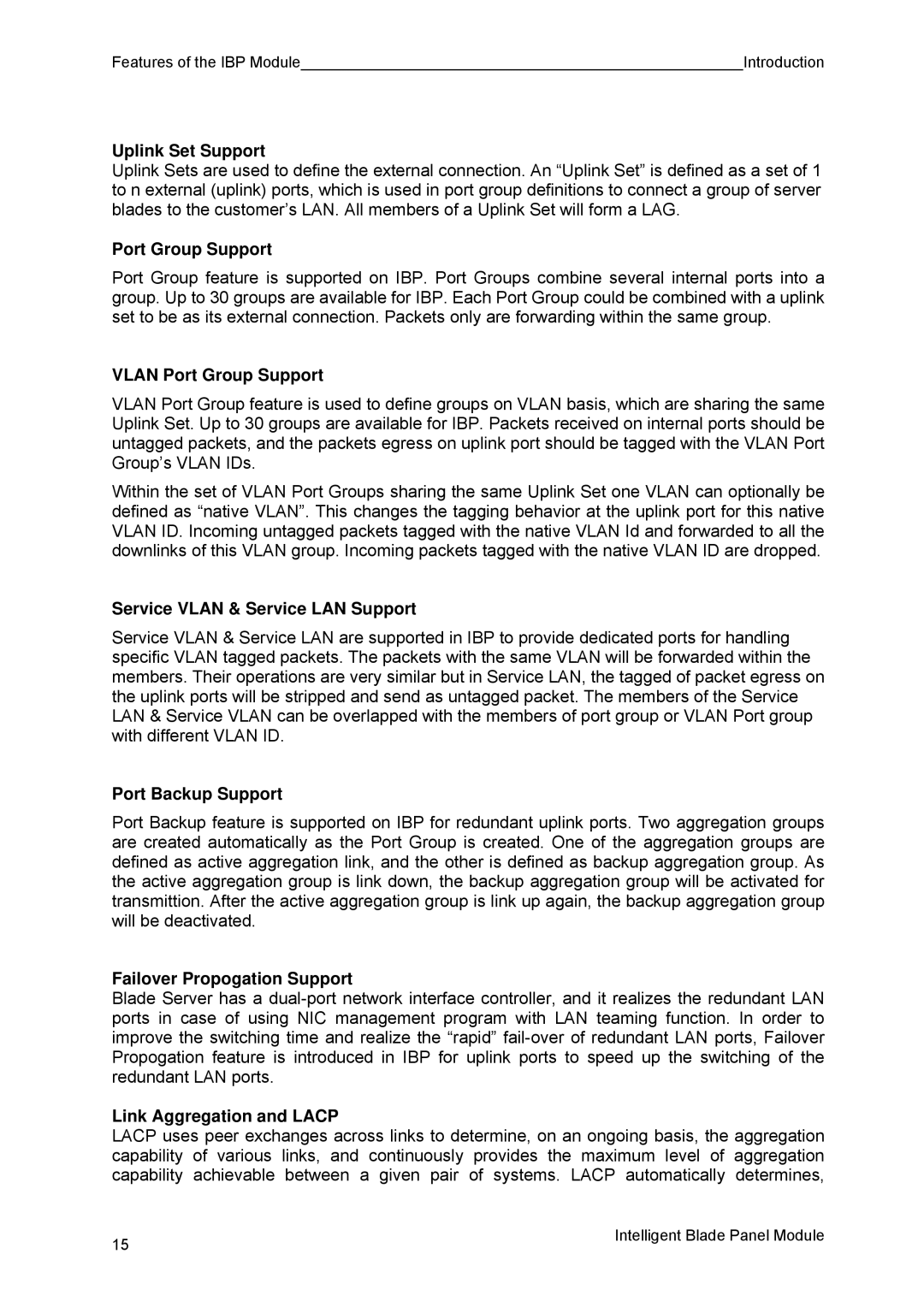Features of the IBP Module |
| Introduction |
Uplink Set Support
Uplink Sets are used to define the external connection. An “Uplink Set” is defined as a set of 1 to n external (uplink) ports, which is used in port group definitions to connect a group of server blades to the customer’s LAN. All members of a Uplink Set will form a LAG.
Port Group Support
Port Group feature is supported on IBP. Port Groups combine several internal ports into a group. Up to 30 groups are available for IBP. Each Port Group could be combined with a uplink set to be as its external connection. Packets only are forwarding within the same group.
VLAN Port Group Support
VLAN Port Group feature is used to define groups on VLAN basis, which are sharing the same Uplink Set. Up to 30 groups are available for IBP. Packets received on internal ports should be untagged packets, and the packets egress on uplink port should be tagged with the VLAN Port Group’s VLAN IDs.
Within the set of VLAN Port Groups sharing the same Uplink Set one VLAN can optionally be defined as “native VLAN”. This changes the tagging behavior at the uplink port for this native VLAN ID. Incoming untagged packets tagged with the native VLAN Id and forwarded to all the downlinks of this VLAN group. Incoming packets tagged with the native VLAN ID are dropped.
Service VLAN & Service LAN Support
Service VLAN & Service LAN are supported in IBP to provide dedicated ports for handling specific VLAN tagged packets. The packets with the same VLAN will be forwarded within the members. Their operations are very similar but in Service LAN, the tagged of packet egress on the uplink ports will be stripped and send as untagged packet. The members of the Service LAN & Service VLAN can be overlapped with the members of port group or VLAN Port group with different VLAN ID.
Port Backup Support
Port Backup feature is supported on IBP for redundant uplink ports. Two aggregation groups are created automatically as the Port Group is created. One of the aggregation groups are defined as active aggregation link, and the other is defined as backup aggregation group. As the active aggregation group is link down, the backup aggregation group will be activated for transmittion. After the active aggregation group is link up again, the backup aggregation group will be deactivated.
Failover Propogation Support
Blade Server has a
Link Aggregation and LACP
LACP uses peer exchanges across links to determine, on an ongoing basis, the aggregation capability of various links, and continuously provides the maximum level of aggregation capability achievable between a given pair of systems. LACP automatically determines,
15 | Intelligent Blade Panel Module |
|
